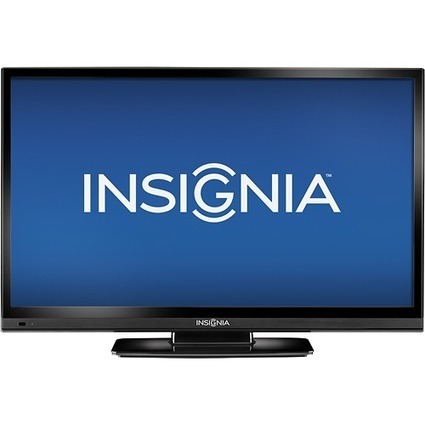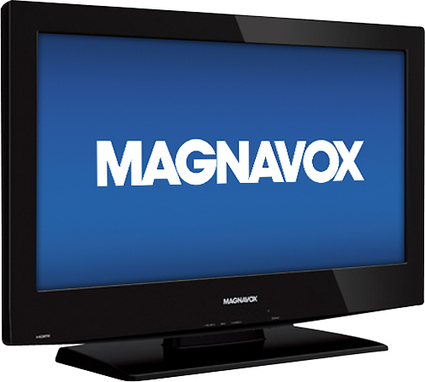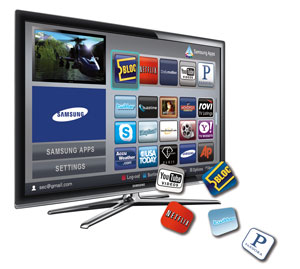
best hdtv picture quality cnet
image

Alex
Hey!
So I am about to purchase a new TV and I am considering a plasma (most likely Panasonic or Samsung). It will be primarily for gaming (PS4), but also movies/shows via Netflix. The room it would go in has various ceiling lights that are on quite often. Will the ceiling lights collide too much with my viewing experience?
Thanks!
Answer
- A Plasma tv will be bad in a bright lit room.
- I recommend Panasonic Plasma OR I recommend Samsung LED (better and/or expensive LED may not have the problems stated below). - http://reviews.cnet.com/best-tvs-picture-quality/
- Input lag for gamers: HD-TV may have more input lag if there is more processing going and how well the TV can process it. Example 1: Most PS3 or Xbox 360 video games are 720p, it would take processing power to upscale it to 1080p for a 1080p HD-TV (unless PS4 or Xbox one video games are 1080p it would be a good idea to get a 1080p HD-TV). Example 2: Interpolation and refresh rates can cause more processing too.ect = Gamer mode can turn off these processes to get less input lag.
- HD-TV viewing distance calculations: http://isthisretina.com/ OR http://www.thx.com/consumer/home-entertainment/home-theater/hdtv-set-up/ OR http://www.sony-asia.com/support/faq/47537 OR http://en.wikipedia.org/wiki/Optimum_HDTV_viewing_distance
- I am not going to talk about HD-TV features like 3D or smart HD-TV. Im not going to talk about projectors. Im not going to talk about the new OLED (RGB or W) HD-TV's.
- A plasma HD-TV is sometimes called an emissive display, the panel is actually self-lighting for each pixel. The display consists of two transparent glass panels with a thin layer of pixels sandwiched in between. Each pixel is composed of three gas-filled cells or sub-pixels (one each for red, green and blue). A grid of tiny electrodes applies an electric current to the individual cells, causing the gas (a mix of neon and xenon) in the cells to ionize. This ionized gas (plasma) emits high-frequency UV rays, which stimulate the cells' phosphors, causing them to glow the desired color.
= Better contrast = Plasma's have better black levels, but worse white levels. Plasma's are a emissive display which means better brightness accuracy and better color accuracy.
= Better viewing angles = Plasma is a emissive display, it has little/no picture problems when viewed of axis (not directly in front of screen).
= Better for dark-lit rooms, but worse for bright-lit rooms = Plasma's can have screen glare and less contrast and less brightness and faded colors in bright-lit rooms, but they have little/none of these problems in dark-lit rooms. Better and/or expensive Plasma's may use less reflective glass.
= Better response times = Plasma's florescent phosphor coating in each subpixel stops glowing just a few nanoseconds after the electrode turns off (on and off) which means less lag and less ghosting.ect
= Better refresh rates = Plasma's better response times bundled with it's sub-feild drives or focused-feild drives take each of a it's pixel's sub-pixels and flashes it a number of times to create a image, the way Plasma works has little motion blur with sub-feild drives or little/no motion blur (and better brightness control, color quality, contrast.ect) with focused-feild drives. (Plasma can use interpolation for judder too).
= Worse screen size options, and worse weight (thicker), and worse manufacturer choices = Plasma is a emissive display which makes it hard to make a Plasma screen size smaller than 40 inches for HD-TV and you may not find them larger than 70 inches for HD-TV because the power consumption will sky rocket. Plasma's tend to about 10-20 pounds heavier too and are thicker but that can provide better audio quality tho. Main brand Plasma maker is Panasonic or Samsung or LG.
= Worse power consumption, and worse life span, but better burn in, but worse high altitudes = A plasma can cost on average around $50 a year more. A Plasma can easily last 10 years and much more. Newer Plasma's have burn in technologies that make really hard or not possible to have permanent burn in, but there sill a chance you could get temporary burn in (even tho it's harder to do now). Plasma may not work in really high altitudes and if it does the TV would create a buzzing sound.
= Price = Plasma is more expensive to buy than LCD, but Plasma is less expensive to buy than LED. Plasma does not cost that much to make.
- An LCD HD-TV is sometimes referred to as a transmissive display, the panel has sections of lighting for a section of pixels. Light isn't created by the liquid crystals themselves; instead, a light source behind the LCD panel shines through the display (CCFL LCD or LED LCD). A diffusion panel behind the LCD redirects and scatters the light evenly to ensure a uniform image. The display consists of two polarizing transparent panels and a liquid crystal solution sandwiched in between. The screen's front layer of glass is etched on the inside surface in a grid pattern to form a template for the layer of liquid crystals. Liquid crystals are rod-shaped molecules that twist when an electric current is applied to them. Each crystal acts like a shutter, either allowing light to pass through or blocking the light. The pattern of transparent and dark crystals forms the image.
= Worse contrast = LCD's have worse black levels, but better white levels. LCD's are a transmissive display which means it is edge-lit or full-array-lit and it also uses local dimming (aka backlight-flashing/scanning) which turns off sections of CCFL or LED which means you can get brightness uniformity problems (brightness leaks into areas and you can see the brightness changing to make up LCD's bad contrast and slow brightness changes.ect) which means less brightness accuracy and less color accuracy .ect (Better and/or expensive LCD use LED lights and more emissive local dimming display and more advance technologies to get a picture as good or better than a Plasma).
= Worse viewing angles = LCD uses a CCFL backlight or a LED backlight (transmissive display), and the LCD pixels act like shutters (and the red, green, blue filters), opening and closing to let light through or block it, this shutter effect causes increasing variations in picture brightness as viewers move further off axis (not directly in front of screen) which means you may notice that the picture looks less bright and vivid and you might see slight changes in color too (IPS > TN).
= Worse for dark-lit rooms, but better for bright-lit rooms = LED or LCD have the most light coming off from their screen which may strain your eyes in a dark-lit rooms, but they have little/no screen glare and little/no picture problems in bright-lit rooms.
= Worse response times = LCD'S liquid crystals take longer to change from on or off (switch around) which means more lag and more ghosting.ect
= Worse refresh rates = LCD's have more worse response times bundled with it's refresh rates which use backlight-flashing/scanning or fake interpolation frames (for judder too) or just repeat the same real frames which help reduce motion blur, but does not eliminate motion blur.
= Better screen size options, and better weight (thinner), and better manufacturer choices = LCD is a transmissive display which makes it easier to make a LCD screen size very small like around 20 inches and you may find them larger than 70 inches because they use less power consumption. LCD's tend to be about 10-20 pounds lighter too and are thinner (edge-lit displays are even thinner) but that can provide worse audio quality tho. Many brands of manufacturer to choice from.
= Better power consumption, and better life span, and little/no burn in, and little/no altitude problems = A LCD or a LED can cost on average around $50 a year less. A LCD or a LED can easily last 10 years and much more.
= Price = LED is more expensive to buy than Plasma, and LED is even more expensive to buy than LCD. LED and all the advance technologies going into them make cost more to make, but that's why there is budget LCD versions instead.
is plasma better if you dont care about its thickness and energy cost?

Might Guy
i saw 2 60in TVs, one is plasma and the one is LED, the plasma one is like $300 - 400 cheaper. i read some article about plasma vs led, they all say they have pros and cons. but what i see is plasma usually have 600hz while cheaper LED are 120hz. does Hz matters?
also, none of the reviews i read talks about the life span. Usually, which TV has longer life span? from your personal experience or opinion, would get a plasma or a LED? say i am gonna be watching mainly sport and some movies on the TV.
Answer
- Short answer: If you read any article reviews that always recommend Plasma. Plasma has better response times which leads to less ghosting/lag and bundle that with their refresh rates (hz) that also means little/no motion blur for fast moving objects. Most tv manufacturers may not bother with the life span specification because both Plasma and LCD can easily last 10 years (with little quality loss) or 20+ years before quality becomes a factor. The government made manufacturers post a yellow sticker on their tv's stating power consumption and you will see that newer Plasma tv's will probably only cost $50 (6 hours a day every day) more a year than LCD.
- I recommend Panasonic Plasma OR I recommend Samsung LED (better and/or expensive LED may not have the problems stated below because of additional technologies going into them). - http://reviews.cnet.com/best-tvs-picture-quality/
- Input lag for gamers: HD-TV may have more input lag if there is more processing going and how well the TV can process it. Example 1: Most PS3 or Xbox 360 video games are 720p, it would take processing power to upscale it to 1080p for a 1080p HD-TV (unless PS4 or Xbox one video games are 1080p it would be a good idea to get a 1080p HD-TV). Example 2: Interpolation and refresh rates can cause more processing too.ect = Gamer mode can turn off these processes to get less input lag.
- HD-TV viewing distance calculations: http://isthisretina.com/ OR http://www.thx.com/consumer/home-entertainment/home-theater/hdtv-set-up/ OR http://www.sony-asia.com/support/faq/47537 OR http://en.wikipedia.org/wiki/Optimum_HDTV_viewing_distance
- I am not going to talk about HD-TV features like 3D or smart HD-TV. Im not going to talk about projectors. Im not going to talk about the new OLED (RGB or W) HD-TV's.
- A plasma HD-TV is sometimes called an emissive display, the panel is actually self-lighting for each pixel. The display consists of two transparent glass panels with a thin layer of pixels sandwiched in between. Each pixel is composed of three gas-filled cells or sub-pixels (one each for red, green and blue). A grid of tiny electrodes applies an electric current to the individual cells, causing the gas (a mix of neon and xenon) in the cells to ionize. This ionized gas (plasma) emits high-frequency UV rays, which stimulate the cells' phosphors, causing them to glow the desired color.
= Better contrast = Plasma's have better black levels, but worse white levels. Plasma's are a emissive display which means better brightness accuracy and better color accuracy.
= Better viewing angles = Plasma is a emissive display, it has little/no picture problems when viewed of axis (not directly in front of screen).
= Better for dark-lit rooms, but worse for bright-lit rooms = Plasma's can have screen glare and less contrast and less brightness and faded colors in bright-lit rooms, but they have little/none of these problems in dark-lit rooms. Better and/or expensive Plasma's may use less reflective glass.
= Better response times = Plasma's florescent phosphor coating in each subpixel stops glowing just a few nanoseconds after the electrode turns off (on and off) which means less lag and less ghosting.ect
= Better refresh rates = Plasma's better response times bundled with it's sub-feild drives or focused-feild drives take each of a it's pixel's sub-pixels and flashes it a number of times to create a image, the way Plasma works has little motion blur with sub-feild drives or little/no motion blur (and better brightness control, color quality, contrast.ect) with focused-feild drives. (Plasma can use interpolation for judder too).
= Worse screen size options, and worse weight (thicker), and worse manufacturer choices = Plasma is a emissive display which makes it hard to make a Plasma screen size smaller than 40 inches for HD-TV and you may not find them larger than 70 inches for HD-TV because the power consumption will sky rocket. Plasma's tend to about 10-20 pounds heavier too and are thicker but that can provide better audio quality tho. Main brand Plasma maker is Panasonic or Samsung or LG.
= Worse power consumption, and worse life span, but better burn in, but worse high altitudes = A plasma can cost on average around $50 a year more. A Plasma can easily last 10 years and much more. Newer Plasma's have burn in technologies that make really hard or not possible to have permanent burn in, but there sill a chance you could get temporary burn in (even tho it's harder to do now). Plasma may not work in really high altitudes and if it does the TV would create a buzzing sound.
= Price = Plasma is more expensive to buy than LCD CCFL, but Plasma is less expensive to buy than LCD LED. Plasma does not cost that much to make.
- An LCD HD-TV is sometimes referred to as a transmissive display, the panel has sections of lighting for a section of pixels. Light isn't created by the liquid crystals themselves; instead, a light source behind the LCD panel shines through the display (CCFL LCD or LED LCD). A diffusion panel behind the LCD redirects and scatters the light evenly to ensure a uniform image. The display consists of two polarizing transparent panels and a liquid crystal solution sandwiched in between. The screen's front layer of glass is etched on the inside surface in a grid pattern to form a template for the layer of liquid crystals. Liquid crystals are rod-shaped molecules that twist when an electric current is applied to them. Each crystal acts like a shutter, either allowing light to pass through or blocking the light. The pattern of transparent and dark crystals forms the image.
= Worse contrast = LCD's have worse black levels, but better white levels. LCD's are a transmissive display which means it is edge-lit or full-array-lit and it also uses local dimming (aka backlight-flashing/scanning) which turns off sections of CCFL or LED which means you can get brightness uniformity problems (brightness leaks into areas and you can see the brightness changing to make up LCD's bad contrast and slow brightness changes.ect) which means less brightness accuracy and less color accuracy .ect (Better and/or expensive LCD use LED lights and more emissive local dimming display and more advance technologies to get a picture as good or better than a Plasma).
= Worse viewing angles = LCD uses a CCFL backlight or a LED backlight (transmissive display), and the LCD pixels act like shutters (and the red, green, blue filters), opening and closing to let light through or block it, this shutter effect causes increasing variations in picture brightness as viewers move further off axis (not directly in front of screen) which means you may notice that the picture looks less bright and vivid and you might see slight changes in color too (IPS > TN).
= Worse for dark-lit rooms, but better for bright-lit rooms = LCD's have the most light coming off from their screen which may strain your eyes in a dark-lit rooms, but they have little/no screen glare and little/no picture problems in bright-lit rooms.
= Worse response times = LCD'S liquid crystals take longer to change from on or off (switch around) which means more lag and more ghosting.ect
= Worse refresh rates = LCD's have more worse response times bundled with it's refresh rates which use backlight-flashing/scanning or fake interpolation frames (for judder too) or just repeat the same real frames which help reduce motion blur, but does not eliminate motion blur.
= Better screen size options, and better weight (thinner), and better manufacturer choices = LCD is a transmissive display which makes it easier to make a LCD screen size very small like around 20 inches and you may find them larger than 70 inches because they use less power consumption. LCD's tend to be about 10-20 pounds lighter too and are thinner (edge-lit displays are even thinner) but that can provide worse audio quality tho. Many brands of manufacturer to choice from.
= Better power consumption, and better life span, and little/no burn in, and little/no altitude problems = A LCD or a LED can cost on average around $50 a year less. A LCD or a LED can easily last 10 years and much more.
= Price = LCD LED is more expensive to buy than Plasma, and LCD LED is even more expensive to buy than CCFL LCD. LED and all the advance technologies going into them make cost more to make, but that's why there is budget LCD versions instead.
Powered by Yahoo! Answers
























